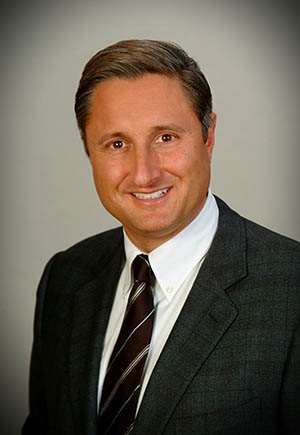
Getty Images/iStockphoto
How Clinical Decision Support Adherence Leads to Better Patient Data
Adhering to clinical decision support tools results in structured, standardized patient data, enabling organizations to improve care practices.
As the volume of healthcare data increases and the shift to value-based care accelerates, clinical decision support tools are becoming more and more critical to ensure quality care delivery.
From computerized alerts and clinical guidelines, to diagnostic assistance and patient data reports, clinical decision support (CDS) tools can help organizations improve patient outcomes, avoid complications, and reduce clinical variability.
“Clinical decision support, most often embedded in the EHR, leads to more standardized delivery of care,” John Danaher, MD, president of clinical solutions at Elsevier, told HealthITAnalytics.com. “It generates enhanced clinical outcomes, enhanced administrative efficiencies, and leads to structured patient data.”

Despite the many benefits of CDS systems, these tools can bring unprecedented challenges as well. Many in the healthcare industry are all too familiar with unintuitive platforms and unnecessary alerts causing frustration and physician burnout.
These issues can also result in providers failing to adhere to CDS recommendations, leading to inconsistent care practices, patient safety concerns, poor performance measures, and increased spending.
A 2018 study published in the American Journal of Managed Care showed that total healthcare costs increased by 7.3 percent when physicians didn’t adhere to CDS recommendations, while length of stay increased by 6.2 percent.
“There's not a hospital CEO or chief medical officer that doesn't view unintended variability in care delivery as a significant issue, because it results in suboptimal clinical outcomes and wasted healthcare costs,” said Danaher.
“Physicians are very reliant on the knowledge that they were trained with, and that knowledge may still have a profound impact on how they deliver care. In addition to that, there's a plethora of healthcare information and data constantly being published. It's very hard for a busy clinician to keep up with all that information and then incorporate it into her practice.”
Nonadherence to CDS recommendations can result in unstandardized or unstructured patient data, which hinders improvements in care practices, Danaher said.
“If you have 20 breast cancer oncologists, and they're treating patients with a similar disease in 25 different ways, that results in unstructured patient data. That's the absence of using clinical decision support to understand the best, fastest, and most evidence-based approach to treat that cancer,” he explained.
With structured or standardized data, providers can derive much more meaningful insights from treatments and care delivery than with unstructured data, Danaher noted.
“Think of a scattered plot that has a bunch of data points that have no correlation, because they're all random. It's very hard to drive any kind of insights from a thousand random data points. Even when you run analytics against the information, it’s hard to figure out what the associations are,” he said.
“But if you have a thousand data points that are closely aligned to treat various types of disease because everyone is adhering to a common set of pathways – common drugs, common therapies – you can drive meaningful correlation and meaningful insights.”
In order to generate structured, standardized patient data, organizations need to have effective CDS tools in place, Danaher pointed out.
“When clinical decision support tools work well, you’ll see adherence to CDS recommendations at very high rates,” he said.
“The key with clinical decision support is to ensure that it's leading to recommendations that reflect medical best practices. That in turn will yield good structured data, versus oncologists treating patients the way they were trained from years ago, and who, for various reasons, might not be able to keep up with the latest drugs, therapies, and protocols.”
Building valuable, reliable CDS tools requires organizations to take a collaborative approach, bringing together providers, researchers, and developers to create a single source of truth. This means that all key players should agree on shared definitions for key elements, such as the suggested interval between cancer screenings for patients of different ages.
Additionally, when organizations notice that many providers are failing to adhere to CDS recommendations, leaders should take a step back to understand why, Danaher said.
“We review the literature, and we look at what the oncologists did instead,” he explained.
“We regularly have both community and academic oncologists reviewing CDS recommendations, because while community oncologists tend to see more typical cases, academic oncologists are familiar with rarer cases. We can obtain input from all areas.”
More reliable CDS tools could have the potential to change the way researchers use data to make medical discoveries.
“Pretty much everything we do in medicine is based upon multi-centered, random clinical trials that are conducted over many years. They're prospective in nature,” Danaher said.
“There are statisticians crunching the data, and then researchers write and publish a paper. It takes time for that journal to be disseminated to the classroom and incorporated into the standard clinical practice. It’s a very long and expensive process.”
With more standardized information, healthcare research could accelerate, resulting in new innovations and better patient care.
“With structured patient data, we’re able to retrospectively extract patient data from the EHR, and we can say, ‘Okay, well let's retrospectively look at a thousand patients with this type of breast cancer, this tumor size, this node involvement, and let's see how they did with this drug or that drug," Danaher said.
“If you wanted to derive insights from a particular cohort of patients, you could look at that structured data and identify patterns in morbidity and mortality, drug effectiveness, or drug side effects.”
With technology and tools becoming an integral part of everyday care delivery, organizations can start generating standardized, structured information that can contribute to valuable insights.
“As we advance our skills with structured patient data, it’s exciting to think about how we can accelerate clinical research and how we can use patient information to answer clinical questions cheaper and faster.”





